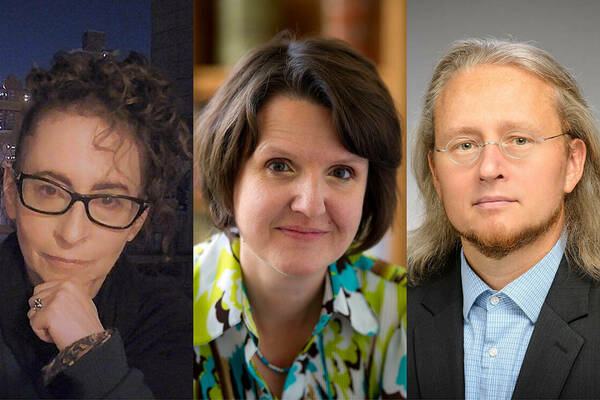 Amy Mulligan
Amy Mulligan
On a sunny spring afternoon, Amy Mulligan leads a class of Notre Dame undergraduates to the shore of Saint Mary’s Lake. Sitting on the grass, the students take turns reading aloud passages from a 12th-century Irish text.
“We make these campus pilgrimages to consider how a text is transformed when you move into a natural environment,” said Mulligan, an assistant professor of Irish language and literature.
“When you read or hear these stories outside as a community, you start to think about how literature shouldn’t just be read in classrooms—it is meant to be performed. It can be so powerful and moving if we let it do what it was intended to do.”
Now, with a fellowship from a National Endowment for the Humanities and a Fulbright U.S. Scholar award, Mulligan will have the opportunity to travel to many of the Irish sites she’s studied as she conducts research for her book project, “A Landscape of Words: The Poetics of Irish Space.”
“I’ll be able to see how different the verbal renderings are from the actual physical landscapes,” Mulligan said, “and consider which elements were taken out and which the authors focused on. I’m interested to see how they measure up and identify some of the authors’ strategies for presenting these places so their audiences can visit them in their imaginations.”
A cultural memory
Mulligan was “amazed and delighted” to receive the two awards, particularly because hers is the first NEH-funded project in medieval Celtic studies. While spatiality is studied in multiple disciplines, the medieval period is often overlooked, she said.
“What I’m finding is that early on, the Irish were exploring these issues in a theoretically nuanced way,” Mulligan said. “It is perhaps the one thing that characterizes Irish literature from the very earliest period to today—this investment in the landscape and how it constitutes national and personal identity. I’m trying to give a long history to space and identity studies.”
Mulligan first became interested in topography in Irish literature as an undergraduate. While studying abroad in Ireland, she received a research grant to retrace the route of a medieval Irish epic, the Táin Bó Cuailnge.
“I realized there is so much story associated with those place-names,” she said, “that it’s not just a map. It becomes cultural memory.”
The texts that describe those places become almost like pilgrimage guides, she said, and bring to life the figures, emotions that once took place at those sites.
A storied landscape
Based at the University of Nottingham, Mulligan will spend a year researching in the United Kingdom and Ireland. She will collaborate with scholars in the fields of place-name studies and environmental history as she workshops each book chapter.
“What I’m trying to bring out is that we are all environmental or spatial creatures,” she said. “We are so attuned to what is happening around us, and we start to understand ourselves by thinking about our landscape, the histories it includes, and how it contributes to our identities.”
At Notre Dame, Mulligan also brings her research to life in a College Seminar course called Storytelling, Memory, and Place: From Ancient Ireland to Modern Chicago. The class focuses partly on the Notre Dame campus and how it helps structure students’ identities.
“So much develops here—intellectually, emotionally, psychologically, and in terms of faith,” she said. “This rich and layered environment becomes a very good place to explore why these iconic sites are important to us and show that they are key parts of our identities.
“Notre Dame has such a strong community and mythic, iconic campus that it is a storied landscape in that sense. And that makes it the perfect site to study this.”


